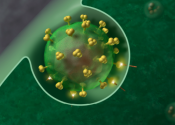The geographic origin of AIDS is now known
A study published in Science magazine reveals for the first time where, when and how the world's AIDS pandemic originated. Thanks to a statistical analysis of all the genetic data available on the human immunodeficiency virus ...
Nov 13, 2014
22
1






